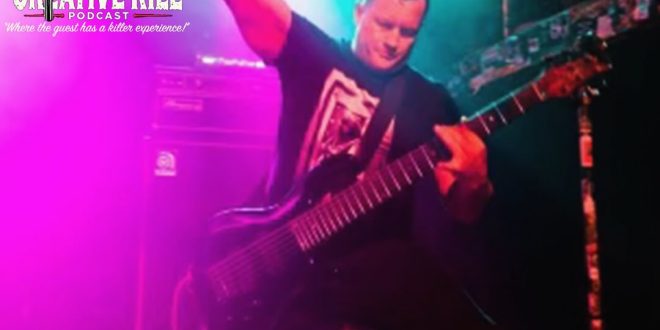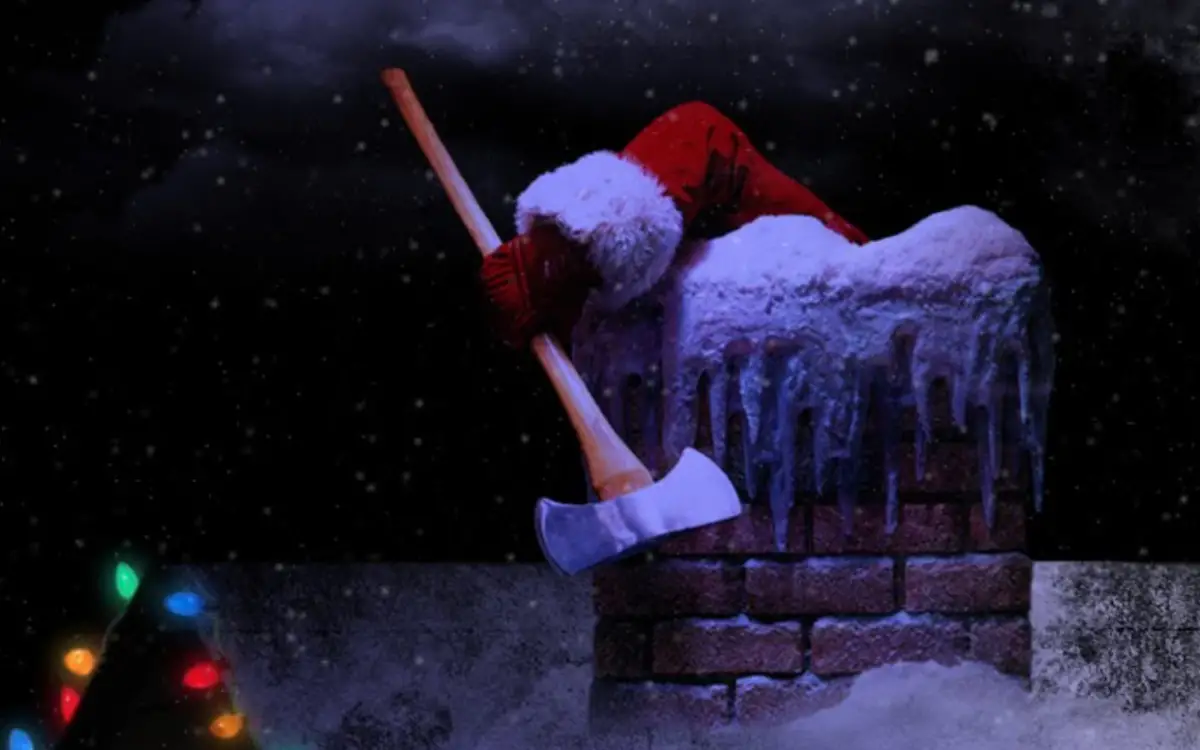Analyzing Strange Matter With Series Creators Marty Engle and Johnny Ray Barnes Jr.
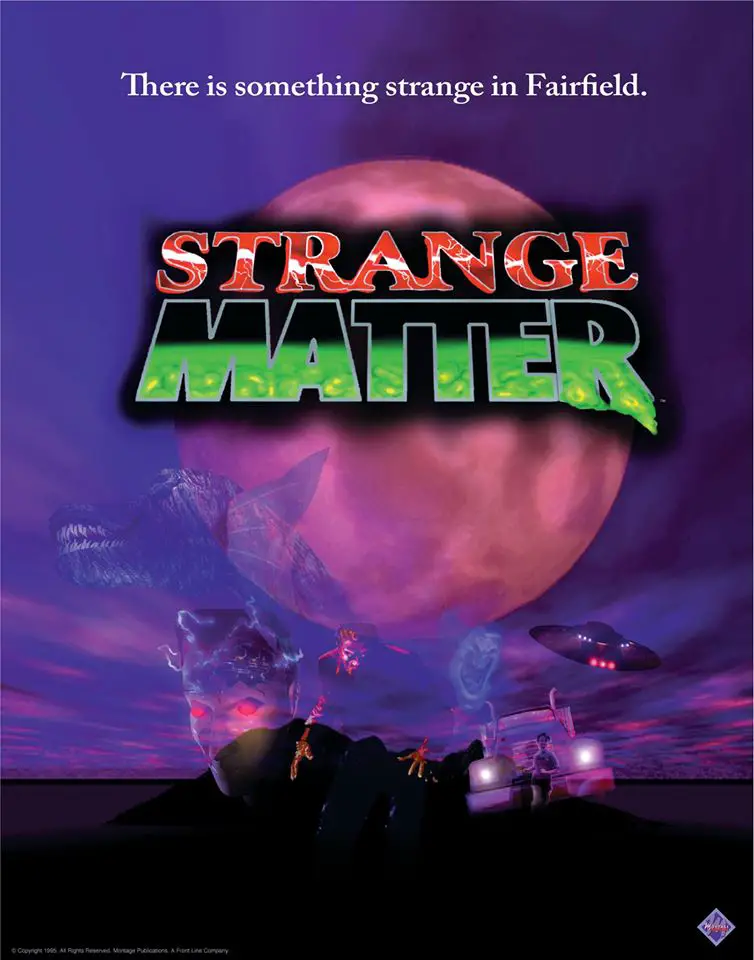
The success of Goosebumps in the 1990s led to a wave of horror titles aimed at young adults. While there were plenty of children’s and teen horror books released before the ’90s, such as Dark Forces, Twilight: Where Darkness Begins, and the output of the Point Horror imprint, it was Goosebumps that streamlined horror fiction for readers ages 9 to 12.
Among the various YA horror franchises in the ’90s, in America you had Strange Matter, Bone Chillers, Bailey School Kids, Baby-Sitters Club Mysteries, Graveyard School, Ghosts of Fear Street, Spinetinglers, Shivers, Deadtime Stories, Doomsday Mall, Foul Play, Choose Your Own Nightmare, and Spooksville. Abroad you had Creepers in England and Hair-Raisers in Australia.
Strange Matter by Marty M. Engle and Johnny Ray Barnes Jr. was one of the most versatile of these franchises. The title ran for thirty entries including a four book spin-off series called Strange Forces. More were planned for release but never materialized. Book #31, Rilo Buru’s Summer Vacation, exists in an incomplete draft format.


The Strange Matter series was one a few titles that shared a premise and cast of characters throughout its various books. It took place in the town of Fairfield, which seemed to be a magnet for weird things, including werewolf substitute teachers, an undead football team, a war between alien races, ghost yetis, and a headless motorcyclist.
Engle and Barnes built up an increasing sense of dread as the protagonists realized something terrible was heading for Fairfield. This led into Strange Forces and the introduction of the series’ mascot, Rilo Buru, an alien refugee trying to protect Fairfield from the forces of evil.
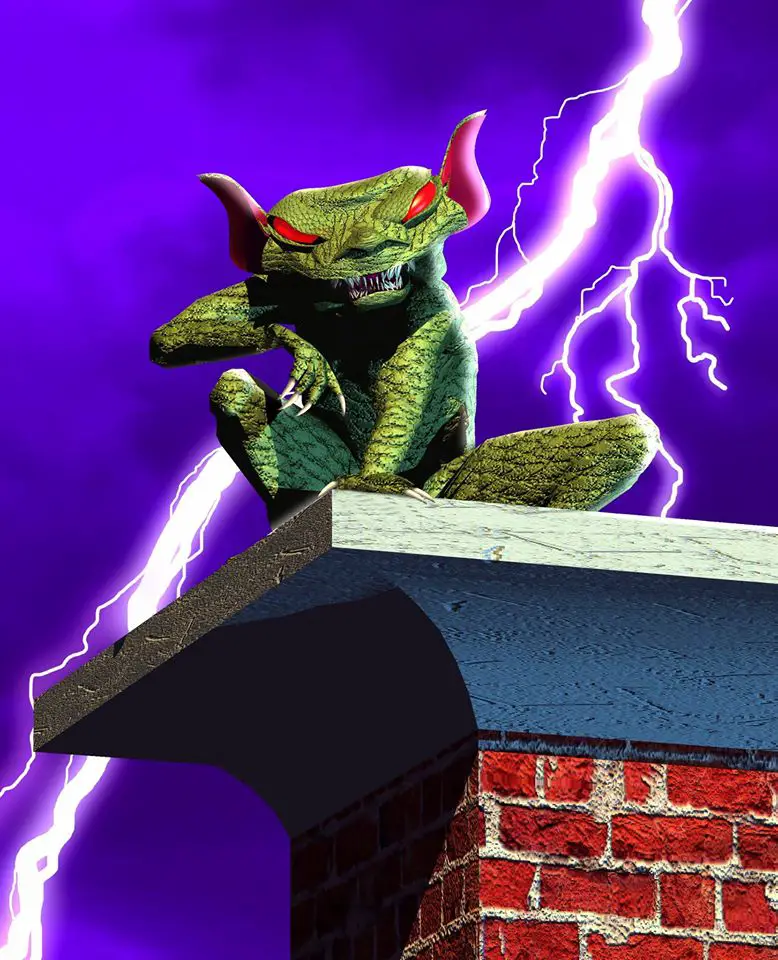
(Rilo Buru’s Classic Design)
Strange Matter had its own website featuring previews of upcoming books, 3D artwork of monsters, and space for readers to submit their own stories and art. While the website is now defunct, you can find archived versions of it via the Wayback Machine.
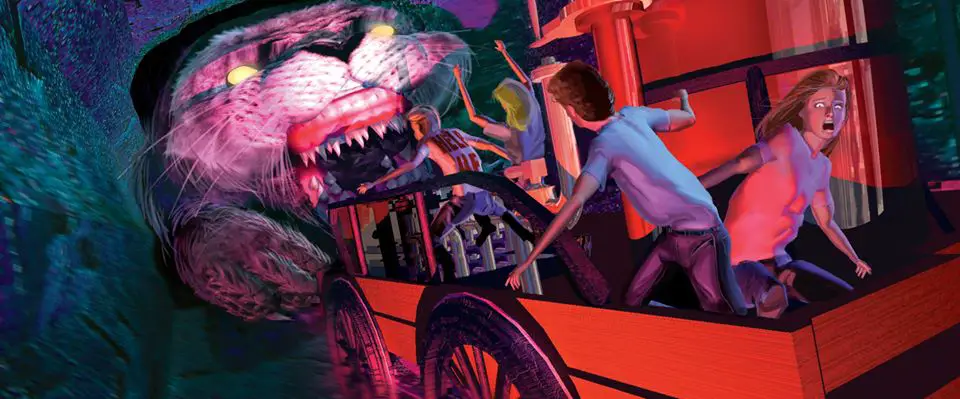
(Concept art for the pitched Disney show)
Engle and Barnes pitched a Strange Matter TV show, complete with concept artwork, to the Disney Channel in the ’90s. Years later, the two did an adaptation of Creature Feature for an episode of The Haunting Hour on Discovery Family.
I’ve been chatting with Marty Engle via Facebook for the last couple of years, and was even granted the privilege of looking over the incomplete draft of Rilo Buru’s Summer Vacation. Knowing what a fan I am of the series, Marty and Johnny graciously agreed to answer some questions about the franchise. Read on for the full exchange.
WH: Marty, Johnny, hi! Thank you for taking the time to speak with Wicked Horror about Strange Matter.
Marty and Johnny: Our pleasure!
WH: Our first question would be about how the two of you got the idea for Strange Matter’s conception and what it was like working on the title in the ’90s.
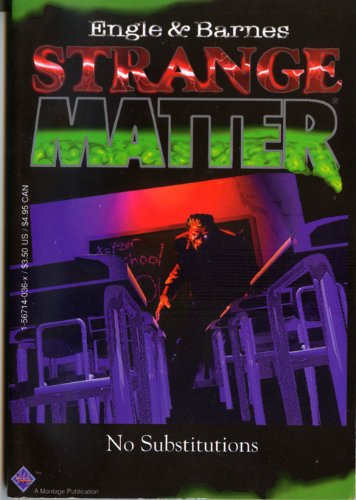
Marty: So in the early ’90s, Ray and I were roommates, both attending the Art Institute of Atlanta. We both had a love for sci-fi, horror, comics and graphic novels. We had both been readers of Starlog and Fangoria and Famous Monsters magazines and had both seen countless classics and not-so-classics of horror and sci-fi from the 50s to the 90s, able to recite a lot of them by heart. We envisioned a comic book series in the vein of the old EC comics, like Vault of Horror, Tales from the Crypt and Weird Science but for modern audiences. We came up with the title of Strange Matter which was a take on the quantum theory of dark matter, matter that, in theory, makes up 85% of the known universe but is still unseen and unknown. We penciled a few pages and brainstormed some early story ideas, but school work and our first jobs after we graduated took most of our time and energy. We kept the title and ideas burning in the background waiting on the right time and opportunity to bring the concept to life. That opportunity came in the form of Montage Publications, an art and book publishing company we both happened to be working for in San Diego California in the mid 90s. Goosebumps and other book series like it were taking off and created a wildly successful market. We realized this might be the chance to launch Strange Matter, not as a comic book, but as a YA paranormal adventure series. We pitched the concept to the company owner, Mark Weinbaum, who saw the potential and gave us the green light for the first six titles. Excited beyond belief, we worked day and night to write the stories and do the cover art and even lay out the books ourselves. Thanks to our day jobs we were both skilled in 3D design programs like Strata 3D and photoshop and illustrator and used every resource we had. We debuted them at the Book Sellers convention in Chicago and the books were a hit, going into Troll school book fairs, Target, Walmart, Borders and even a small start up company at the time called Amazon. They were adapted into full-cast audio books by Brilliance Audio and picked up by Penguin Books for international publication. Some were published in hardbound library editions as well. Working to produce a book a month, we expanded with a fan club and a website which was a very novel thing at the time. It was a busy schedule. Each month we would write the book in a week, edit for a week then do layout and art and publish in a week. The final week was for printing and distribution. At the same time, we ran the website, providing art and content. It was a lot of work but a total labor of love and a dream come true for us.
Ray: I think the concept was always with us, but we had never been tasked with bringing it to life. The DNA is in the things we had watched or read — Stephen King novels, Spielberg movies such as E.T. or Poltergeist, TV shows like The Night Stalker or even Eerie, Indiana. Kids facing a supernatural threat in their own neighborhood. I think for us it was exciting to put that idea into an anthology structure, but connecting it all through one Junior High School. Picking the monsters for each story was fun. The 90s was a great time to be building this series. Technology was at an interesting place. We suddenly had Photoshop, as well as a few good 3D-modeling applications that we learned and used to develop our covers. We also built the Strange Matter website — which was a challenge but a lot of fun. We definitely benefited from all the new tools and possibilities available to us. It was just a blast to create something from scratch — from concept to story to cover and then even the sales material like store displays and sales sheets, knowing that the book on the shelves was your complete vision for that concept.
WH: Alongside the publication of Strange Matter, what was it like running the website and getting to interact with the readers daily?
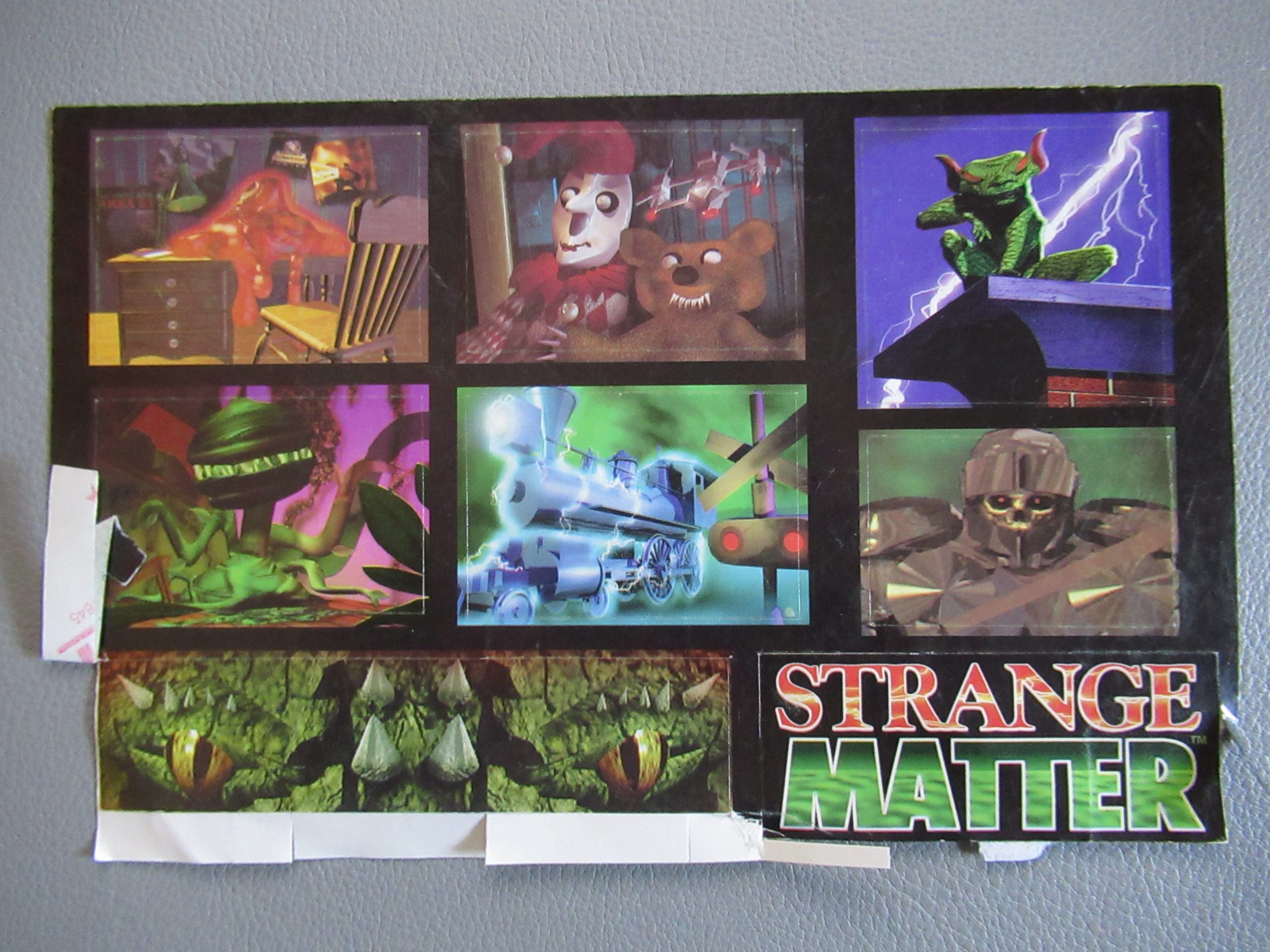
Marty: The website launched in 1995-1996 if I remember correctly and that was the time commercial websites were really starting to take off. It was very new to us but super exciting too. We created 3D models of Rilo and the Collector and all the creatures and had a blast. It was always fun to read the message boards and interact with fans firsthand. We were so impressed with the fans enthusiasm and their creativity in story contests and their questions about the stories and the characters. That was one of our guiding principals: to never write down to the kids but instead challenge them with more complex vocabulary and more intricate plots and storylines than was typical for a chapter series at the time. We wrote the stories we wanted to read about characters we really liked and the kids let us know when we were hitting the mark. We went on book tours and did signings at Borders and Targets in San Diego and across the country and meeting the young fans was fantastic and reminded us who we were really working for.
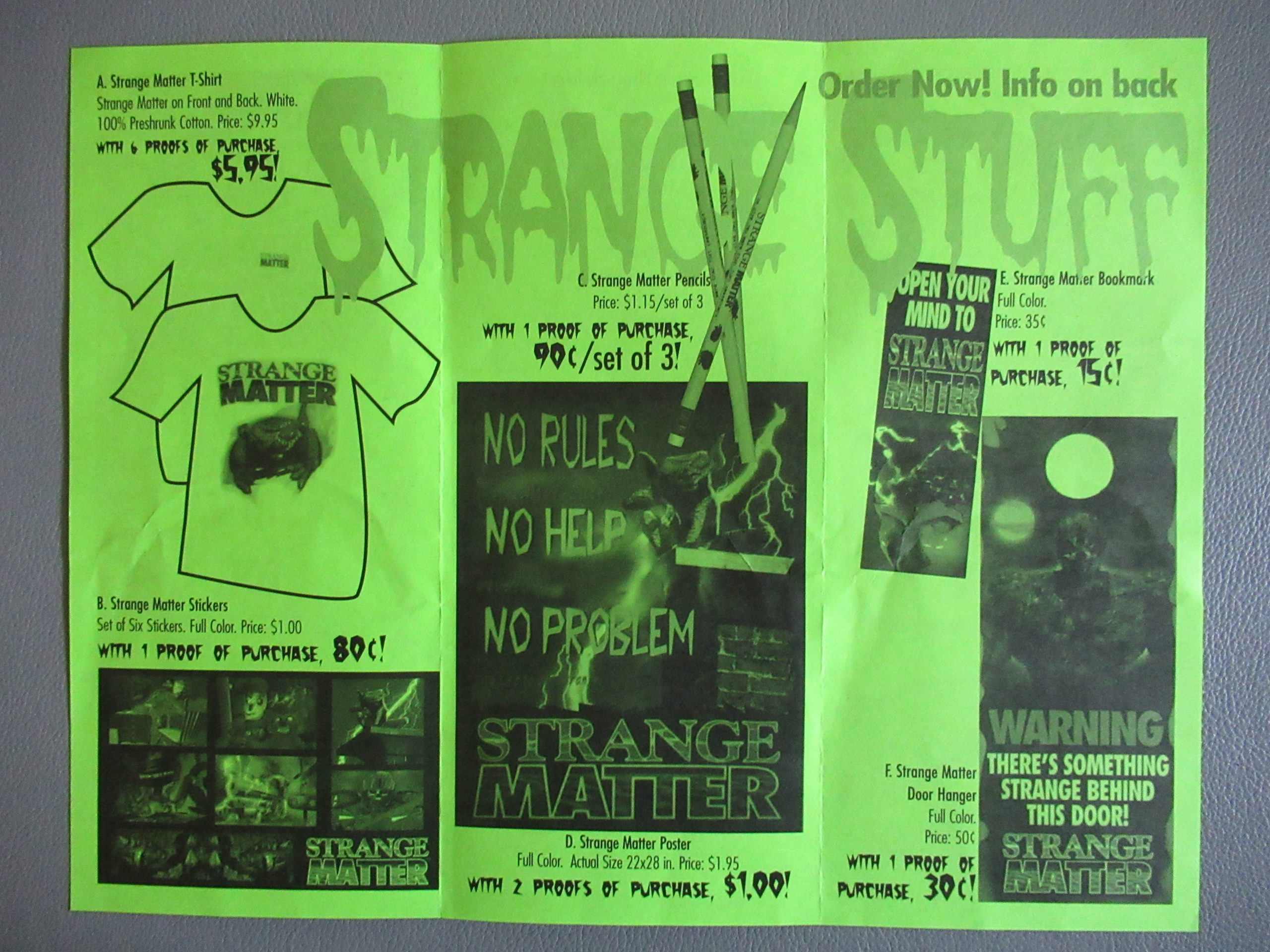
Ray: It was challenging putting it together, but at the time, web developers weren’t as plentiful as they are today. I think it definitely represented the books well and extended the experience for our readers. The message board was great! After a full day of book production, I would log on and read the posts of the day, answering what I could. It was exciting getting to speak directly with our readers on a daily basis.
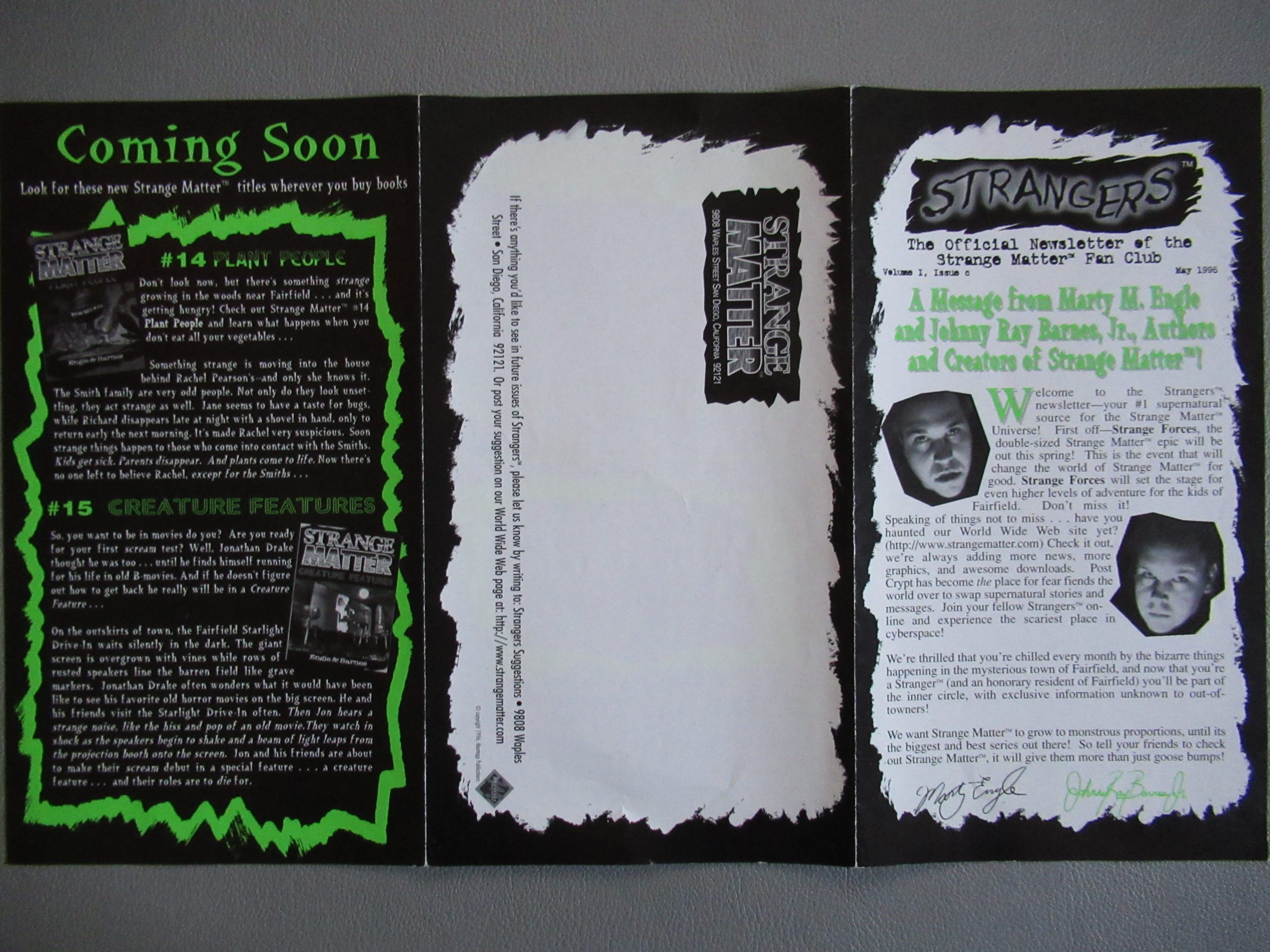
WH: If you could each pick a book you consider to be your favorite, and your least favorite of the run, what would it be? For that matter, did either of you have a favorite protagonist or villain out of the whole series?
Marty: Wow, that’s like asking to pick your favorite child. I was really happy with the way Under Wraps turned out. To me, it was a great blend of humor and horror and had some legit scares and a great cast of characters. Runners up would be Bigfoot, Big Trouble and Second Sighting. Least favorite? Primeval was a difficult book for me because the parent publisher wanted to move the series to sci-fi and away from horror. That book was a transition book and I it was hard to leave the horror elements I loved. My favorite protagonist was in Strange Forces, Rilo Buru. To me, he was our audience stand-in and a great sarcastic foil to the more over-the-top elements, part Bugs Bunny and part Han Solo. But he also had a lot of heart and deep feelings for the kids of Fairfield and would always stand up for them like a true Hero. Of course, I loved the Collector, also of Strange Forces. He didn’t see himself as evil but was self-serving, a narcissist and very cold and calculating and willing to use and destroy anyone to achieve his goals. Like Vader, a less-is-more type villain that had a real presence that left the reader and protagonists filled with Dread.
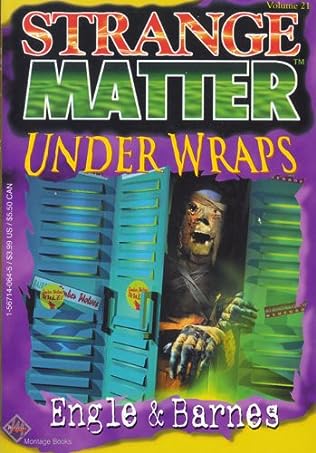
Ray: I can’t pick just one as my favorite, but I really like Bad Circuits, Frozen Dinners, Dead on its Tracks and Nightcrawlers. There were characters and plots in those I thought came together well. Of course, all the Strange Forces books are at the top list, as well. With those, I really thought we stepped up our storytelling game. That’s when we truly started world-building, I believe.
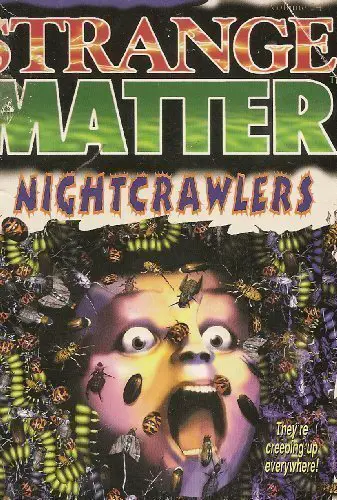
My least favorite is Midnight Game. It was my first in the series and I feel I tried to do too many things in the story. I think there were some good scenes in it, but the characterization suffered because there were too many story elements being introduced. It was also my first cover in the series and it took me forever. This was Photoshop before Photoshop had layers, so it was kind of maddening at times. But from there I continued to form my system for building this type of story and kept growing my 3D and Photoshop skills.
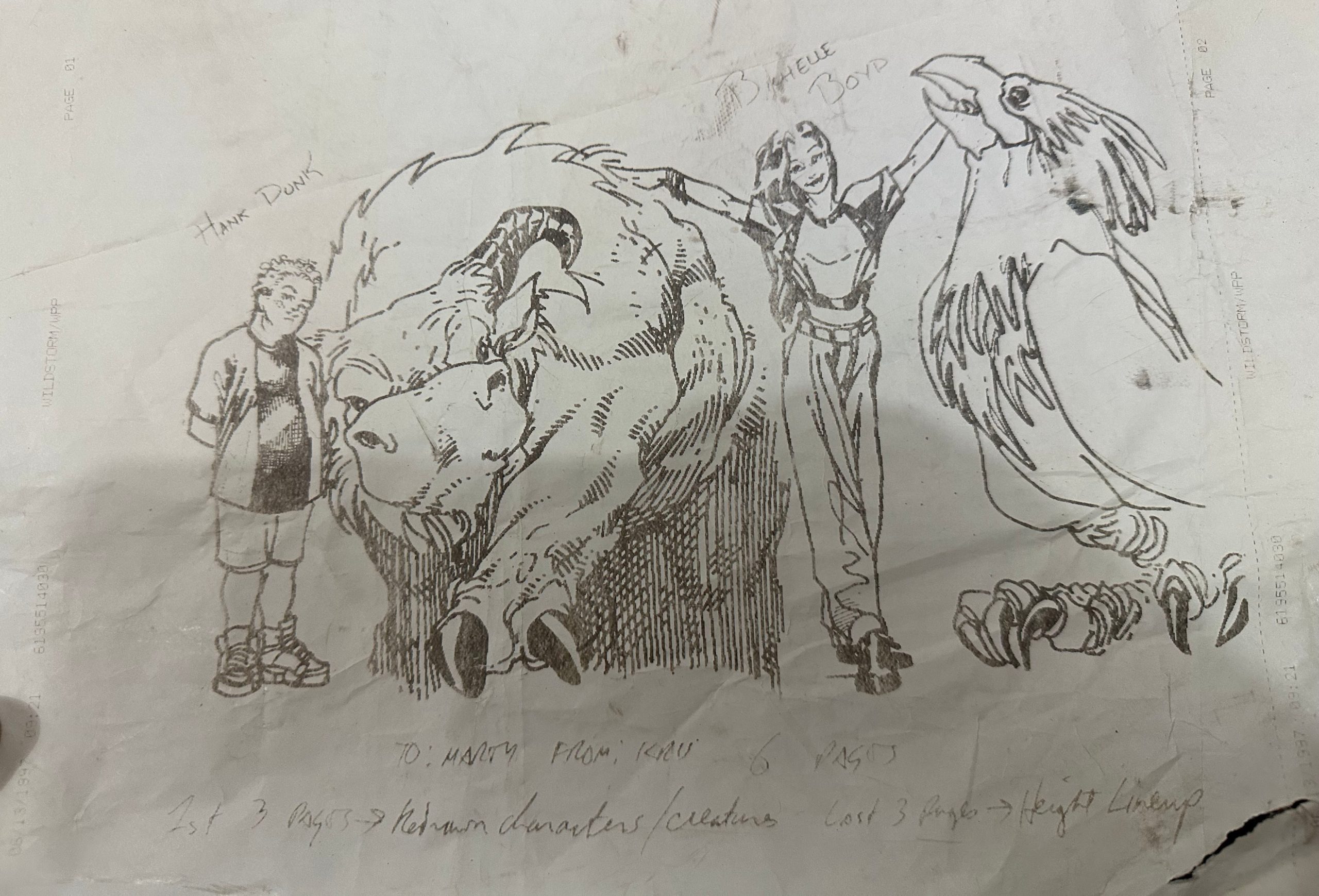
(Concept art of Hank Dunk and Michelle Boyd by Carlos D’Anda)
My favorite characters are Frank and Hank Dunk. I thought those two were fully-formed when I wrote them in Bad Circuits. But when we chose to feature them in Strange Forces as well, they grew into something I feel was truly unique and just fun to write. Their dynamic with one another always kept me on my toes. The Collector was my favorite antagonist, as well. Through the Strange Forces series, we were able to really explore him and I feel really create a villain that, under different story circumstances, readers could even pull for as an anti-hero.
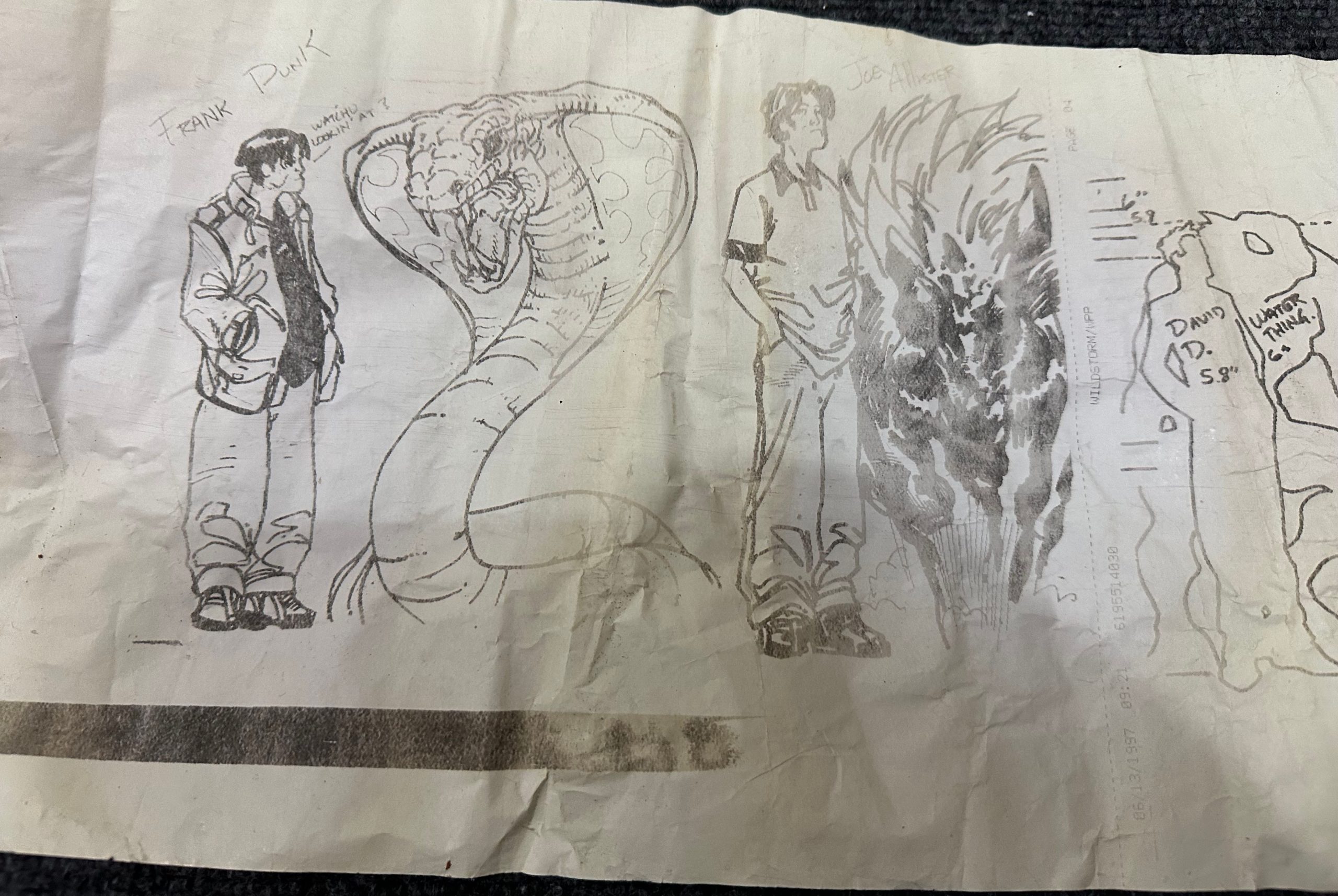
(Concept art of Frank Dunk and Joe Allister by Carlos D’Anda)
WH: Now, the two of you did something different, almost revolutionary, for YA horror fiction at the time with Strange Forces. There were plenty of horror franchises for kids which shared a universe, but yours was probably the first to have a storyline connecting the different books together. A “Crisis Crossover” in YA horror, if you will. What was it like planning the Strange Forces spin-off?
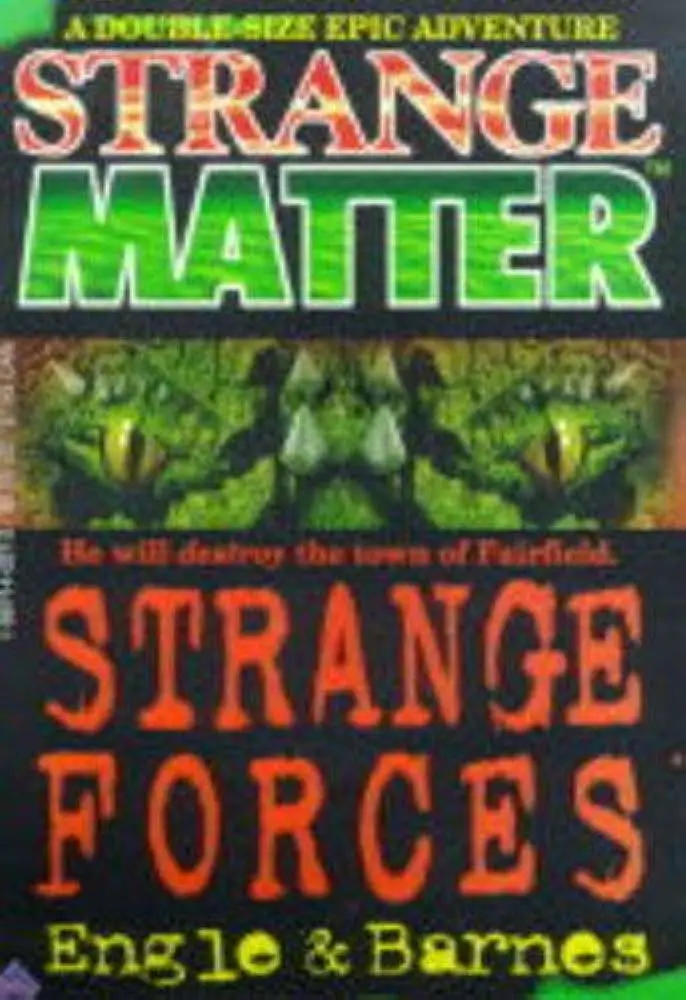
Marty: That, to me, was the big payoff. The reason to have these all these characters share a community and have crossover experiences in the first place. Ray and I loved Star Wars and the world-building aspect of that franchise. Here was our chance to build a shared-universe that invited the reader to play, create their own stories in, and wonder about background and supporting characters. Strange Forces was an attempt to make the SM universe “real”. Through Strange Forces, we could delve into the history of Fairfield and figure out why all this supernatural stuff was happening there in the first place. Having a big cast of kids was great because we could explore their characters more and hopefully have the audience relate even more closely. Strange Forces was a way to have the gang of friends I always wanted to have as a kid myself.
Ray: I remember it being daunting at first. We had lots of characters, and I was worried about spotlighting each of them in the story and not forgetting anyone. We were also writing each other’s characters, and we wanted to make sure they were consistent with their previous appearances. And of course, there were the new characters — specifically Rilo and the Collector — who we had to introduce to readers as well as make them “fit” into the Strange Matter universe. Ultimately, I think we accomplished that, and the Strange Forces books took on a life of their own. I liken it to Strange Matter being our anthology TV series, and Strange Forces was our summer blockbuster movie.
WH: Starting at Book #26, Primeval, Strange Matter saw a genre revision leaning towards an action/sci-fi medium akin to the likes of The Real Adventures of Jonny Quest. The cover artwork was even done by Carlos D’Anda (Brass, Outsiders, Batman: Arkham City) of the now defunct WildStorm Studios. How did you guys feel about shifting gears from the horror setting?
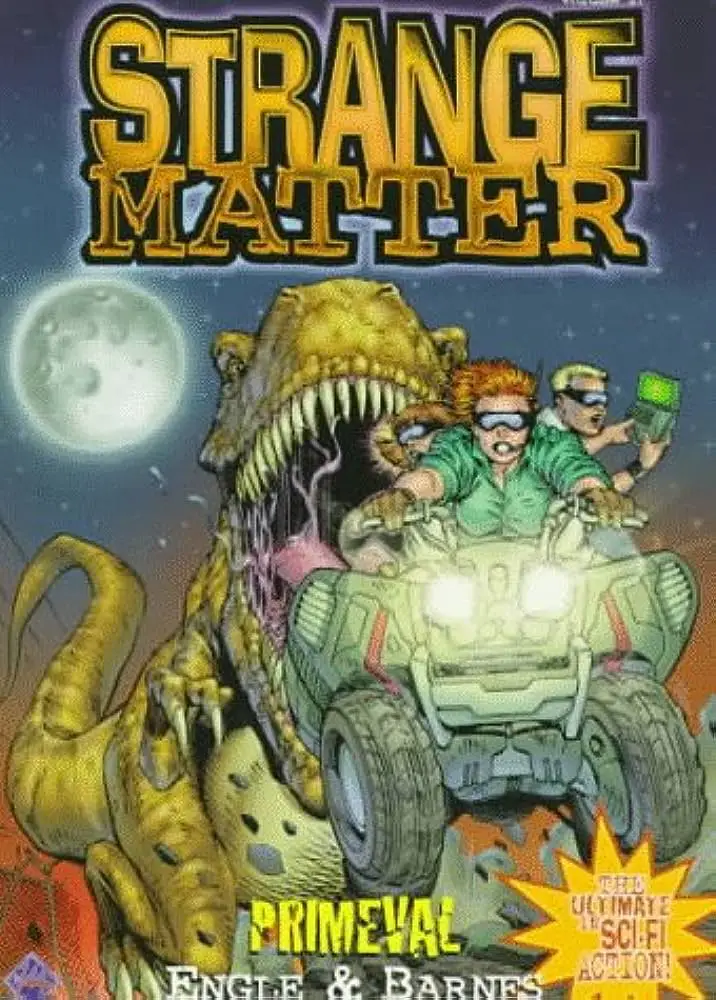
Marty: Our parent publisher believed that the market for YA horror was slowing and wanted to further the brand and keep it going by moving in the sci-fi direction. This was against the original idea for Strange Matter in the first place but market reality pushed us in that direction so we decided to make the move and see what we could do. UFOs and space exploration and extraterrestrial threats intrigued me as much as horror, having grown up on Starlog magazine, Star Wars, Star Trek, ET, Close Encounters, Godzilla, The Day the Earth Stood Still and so on, so I enjoyed it as well. I think at the time, sci-fi was a tougher sell than horror and appealed to a more niche audience.
Ray: The release of the four sci-fi Strange Matter books happened between the film releases of Independence Day and Men In Black. X-Files was still going strong on television. That kind of pop culture atmosphere shaped the tone of those four books stories as Sci-Fi Action. Yes, they were very different from the scary Strange Matter stories we had told up until that point. They had more of a kinship to Strange Forces. With The Off-Worlder, Shadow Chasers and Escape from Planet Earth, we told one story over those three books with action levels on par with Strange Forces. Growing up a Star Wars fan, I loved writing the sci-fi action, and enjoyed building those stories. And who knows — if Strange Matter had continued beyond that, it might have come back to scary stories at some point.
WH: Tell us a bit about the title’s mascot, Rilo Buru, and the role he played in the later books.
Marty: Rilo was us, the authors and the audience. He represented the paranormal intruding into the mundane reality of suburban/rural life. Part Bugs Bunny, part Han Solo, part selfless defender, part put-upon victim of circumstance and part reluctant mentor. To me he was a classic protagonist going on the hero’s journey discovering friends and companions that would help him along. In Rilo, we created a realistic monster character that was relatable, sympathetic and empathetic to the kids in the story and in turn to the reader. Being an “escapee on the run” from an oppressor much more powerful than himself meant he needed the kids as much as they needed him. And for me, personally, he was like ET—the supernatural friend I always wanted to have as a best friend to go on adventures together and explore a wider, more exciting world.
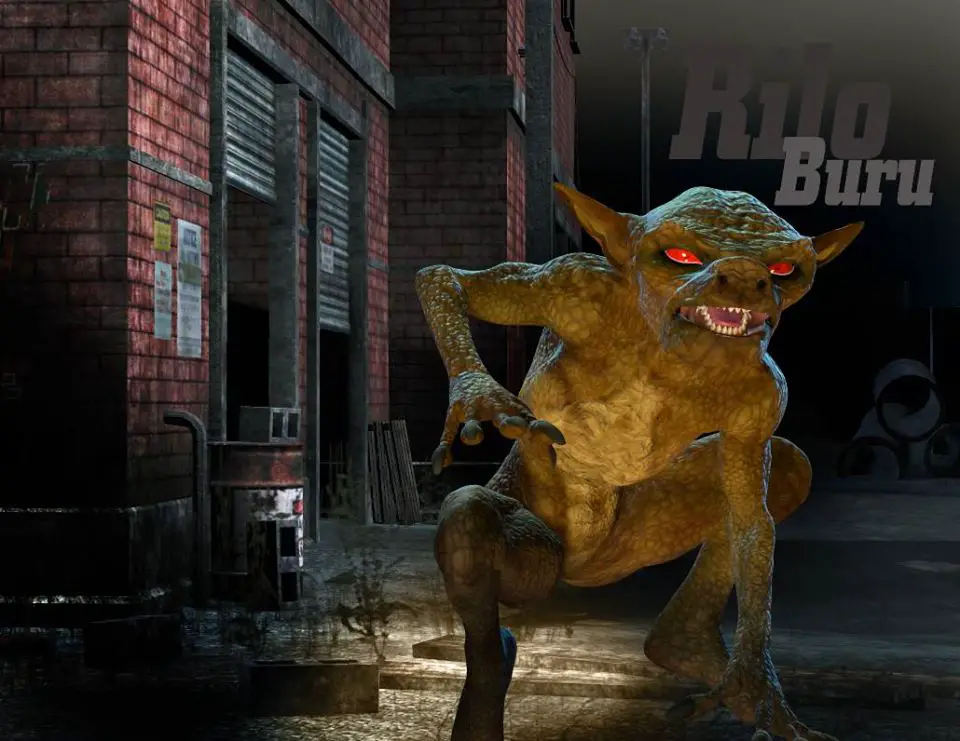
(Rilo Buru’s Updated Design)
Ray: When he was first created, he was more of a catalyst to the Strange Forces story and we didn’t really think of him as a mascot. But his magnetic personality grew on us and we made him more and more important to the SF world. Eventually, all the young characters came to trust and talk to Rilo in a way they did not with their human counterparts. As we evolved Rilo visually as a fully posable 3D model, he became more dynamic and we started including him not only on the Strange Forces covers but also in our marketing material, merchandise and the website. He became the heart of the series.
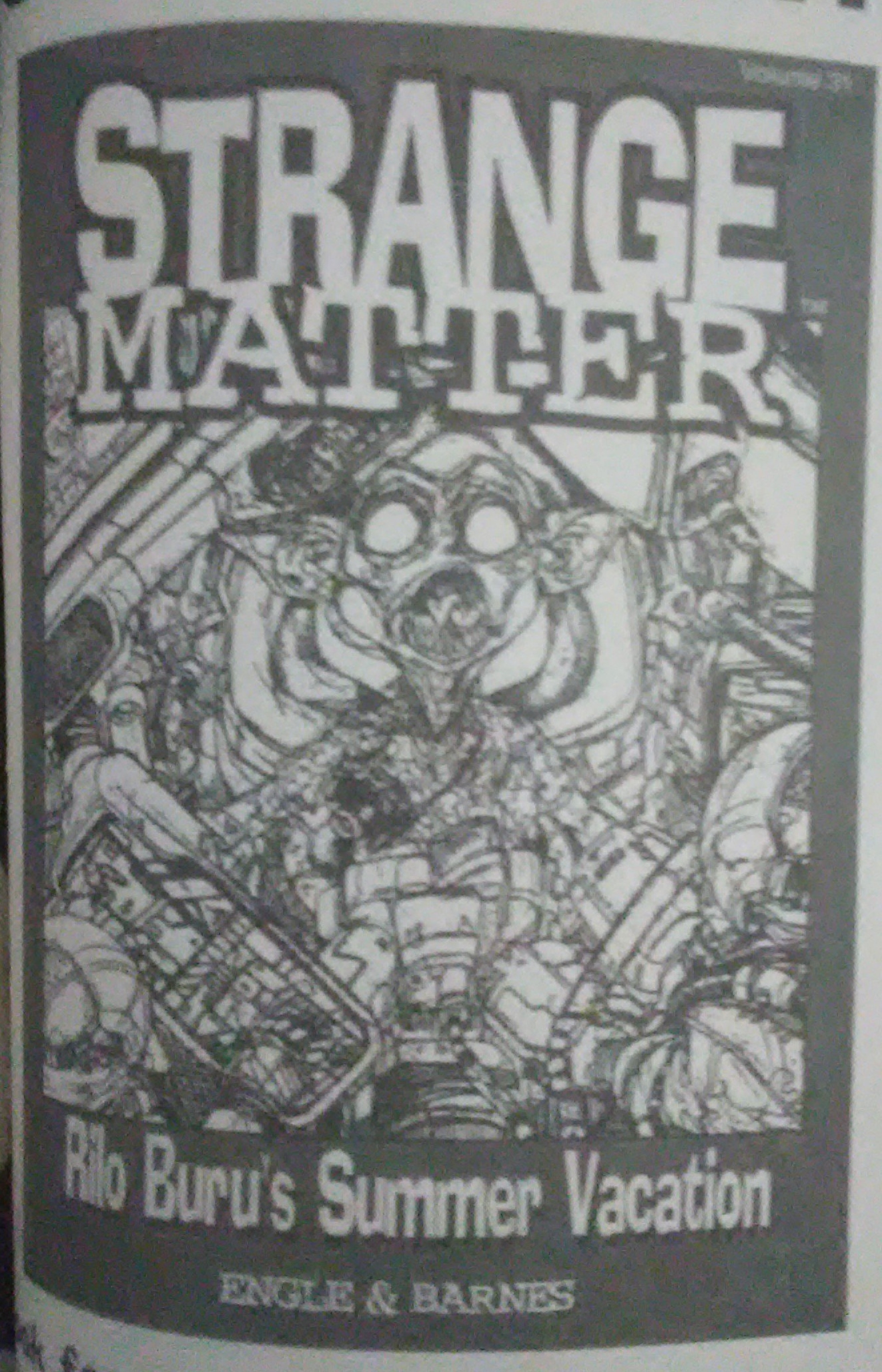
WH: Now, we know there would’ve been a 31st book following the Summer Offworld Trilogy, Rilo Buru’s Summer Vacation. And after that there were several more books planned. Shriek, The Scariest Show on Earth, Stamped, The Infestors, Mission Extraterrestrial, and From the Ashes. Tell us a bit about those.
(Note: As of right now, the existence of two more planned books – Probe and Fathom – has been established thanks to solicitation info rediscovered by Marty Engle)
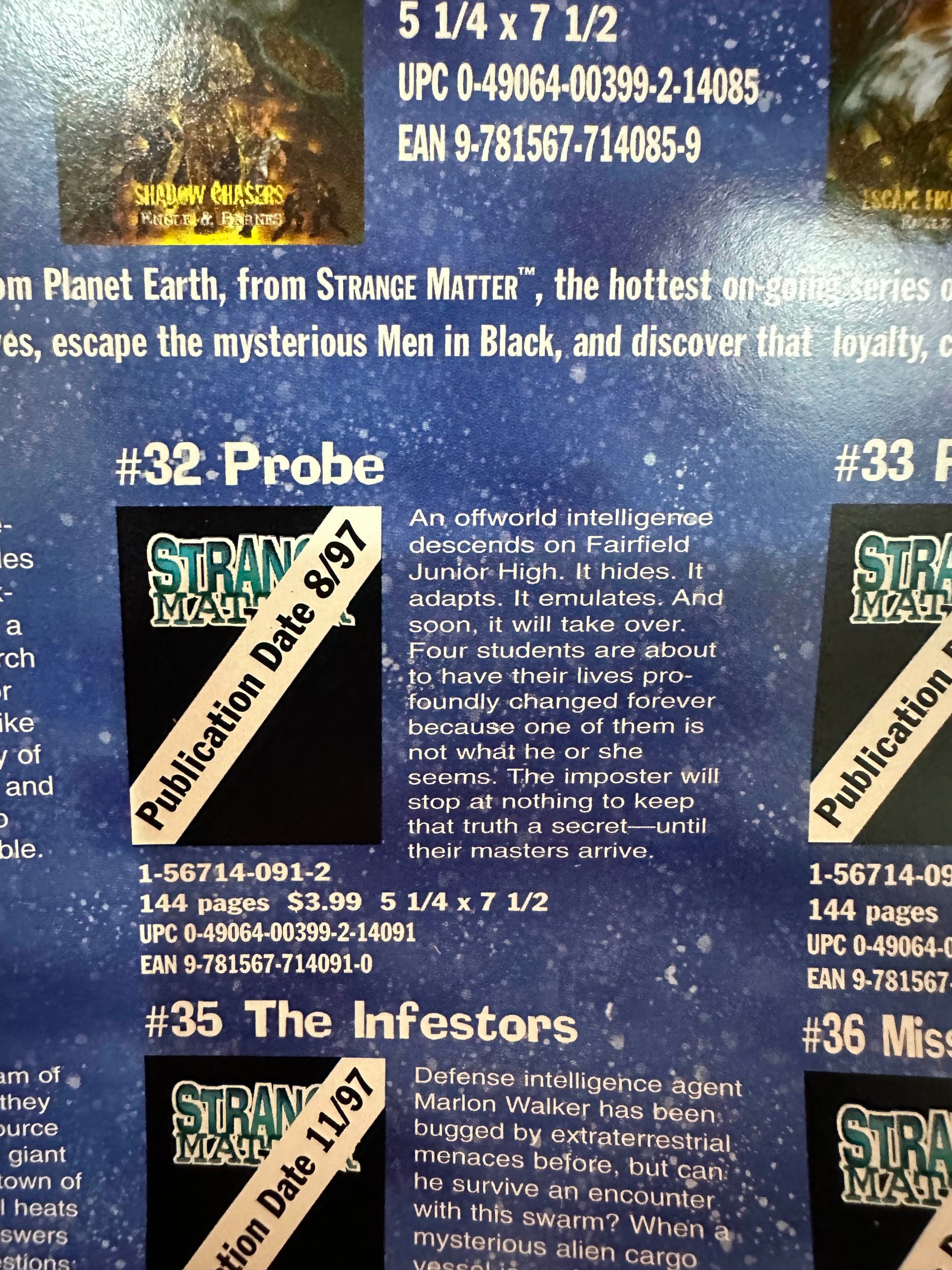
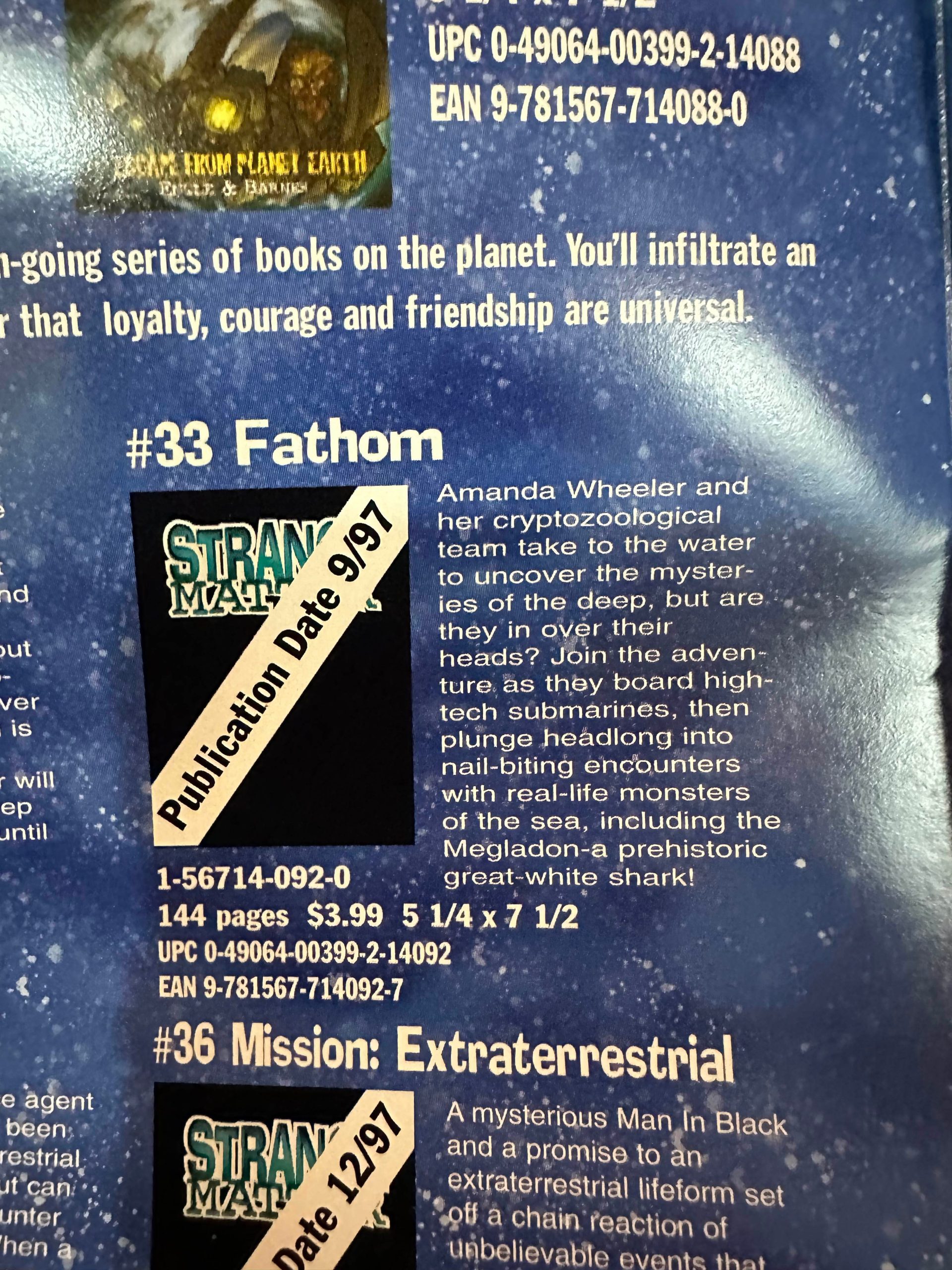
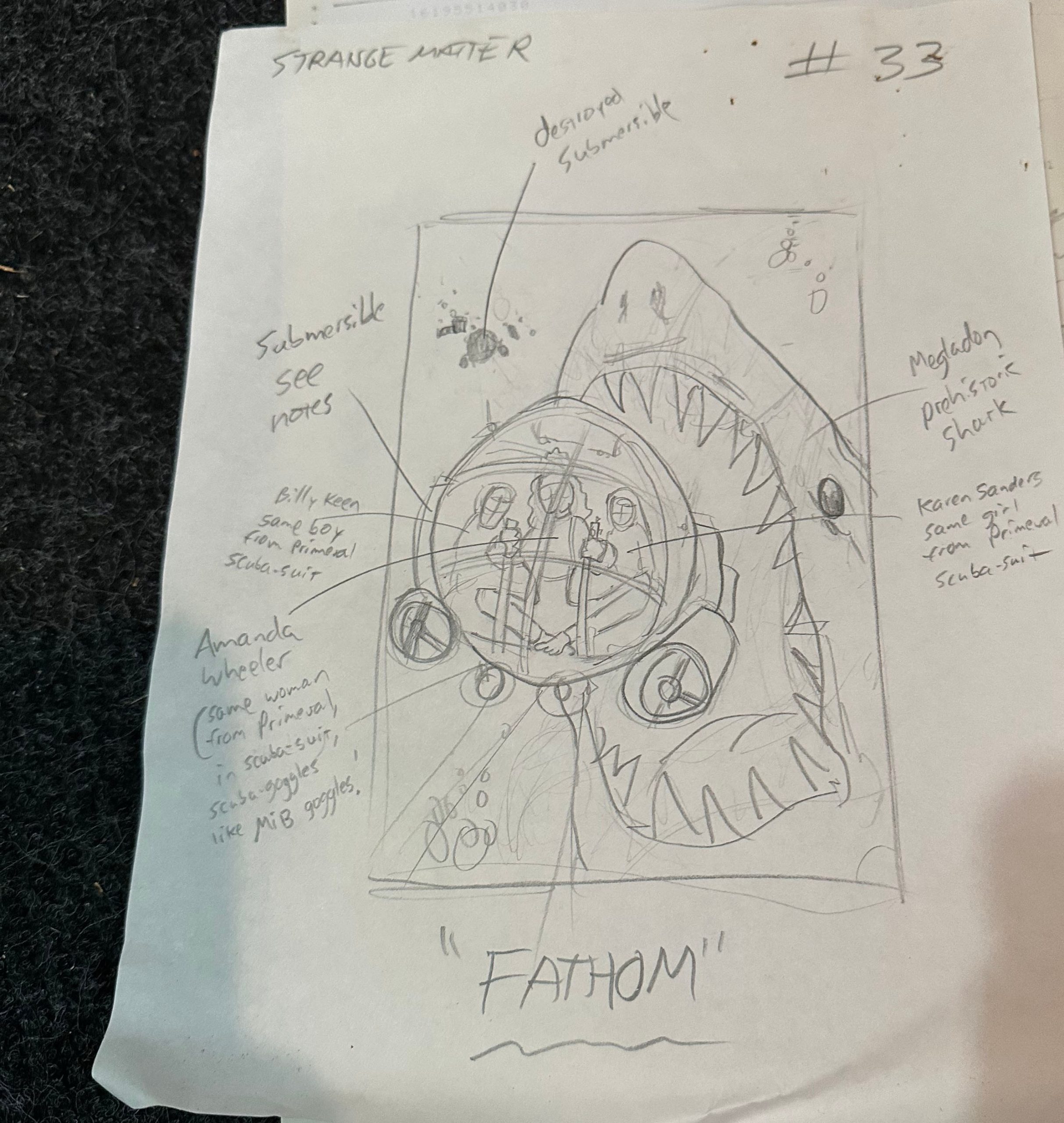
Marty: Wow, memories from the dusty corners of my mind. If I remember correctly, Shriek was actually Hide and Go Shriek about a haunted playground with the ghosts of bullies past. The Scariest Show on Earth was about a haunted circus that came to Fairfield and would have had ties to the Collector from Strange Forces. Mission Extraterrestrial was a continuation of the Off World Trilogy. Infestors was going to be a continuation of Nightcrawlers. Ray may remember more about Stamped and From the Ashes. I believe rough covers of all these were developed by WildStorm Studios in San Diego, but have been lost to time.
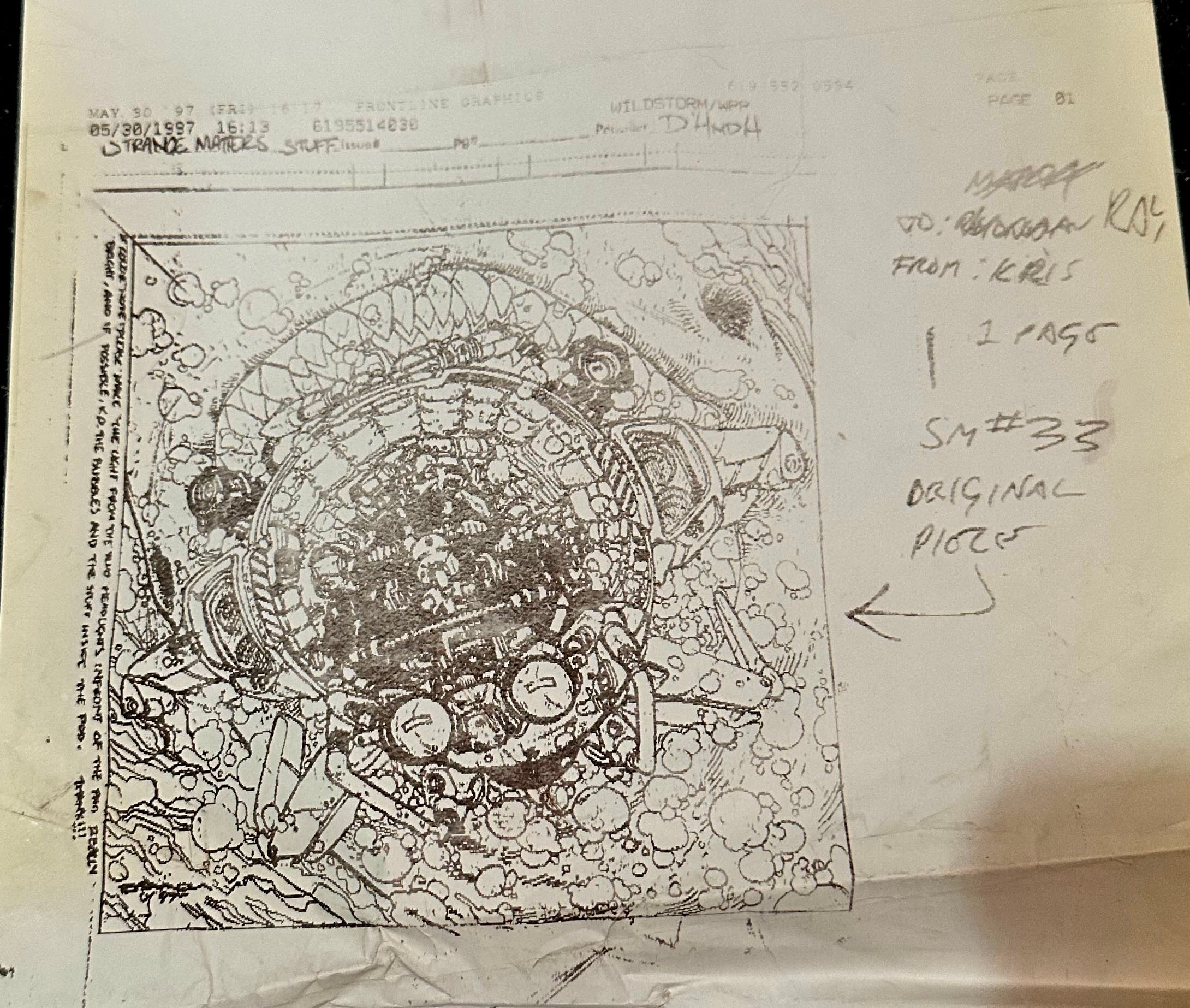
Ray: I definitely remember sketching the cover idea for From the Ashes. We did rough layout sketches for all the covers Wildstorm produced. Once we had a sketch, we would use the next-level technology of “faxing” to get the image over to them. It always amazed me how quickly they would translate those ideas into full illustrations. Anyway, From the Ashes was about lava, and some kind of creature inside the lava. It was definitely influenced by the films Volcano and Dante’s Peak that were soon to be released. I cannot remember details on Stamped. There may be notes on it somewhere deep in the archives.
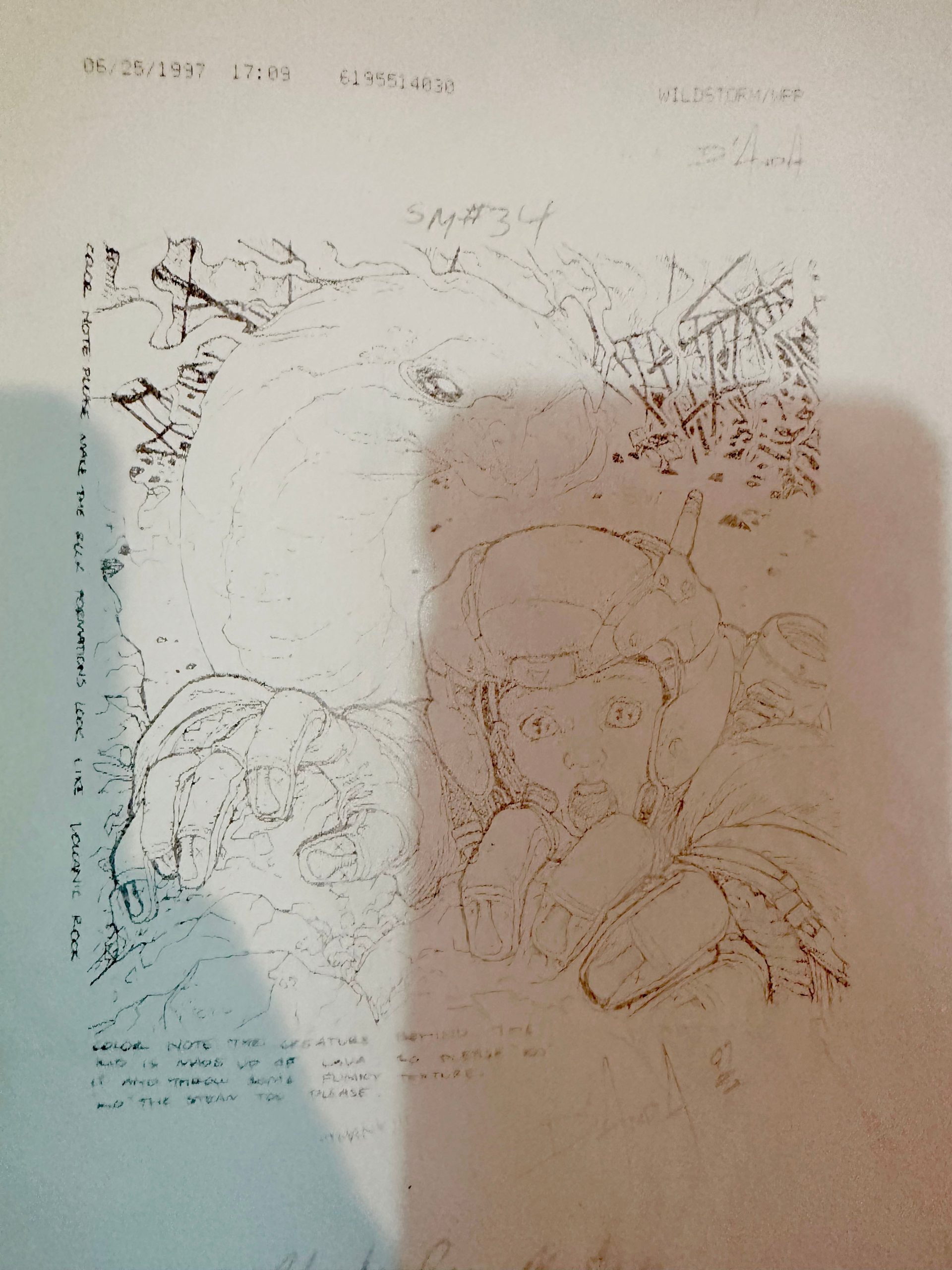
WH: In the late 1990s, you pitched a Strange Matter show to Disney Channel and later did an adaption of Creature Feature for The Haunting Hour. What did your initial pitch to Disney include and what was it like adapting one of your books for The Haunting Hour?
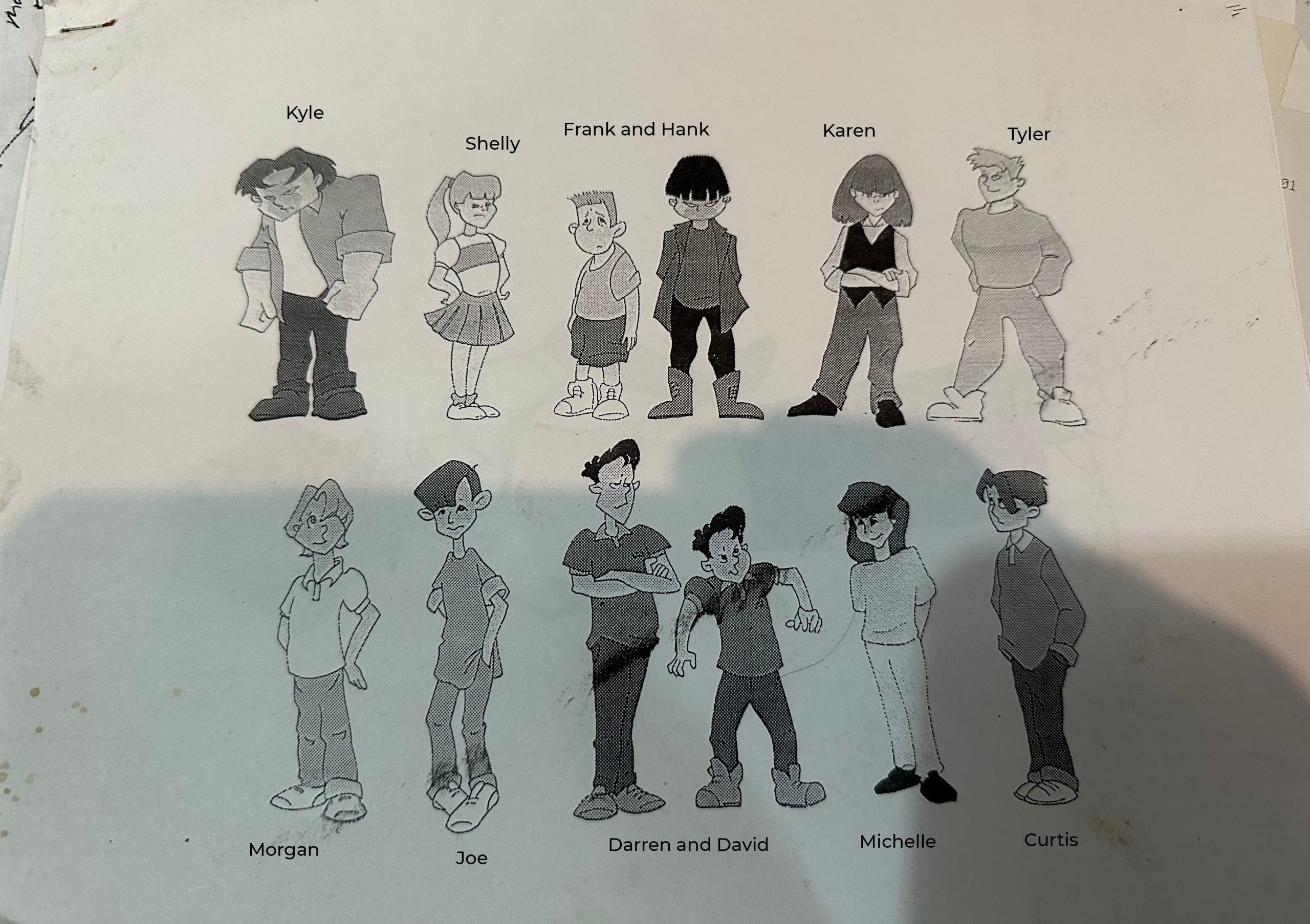
Marty: The Disney pitch was the story of Strange Forces. We had character drawings of kids in the Disney style in both their human and monster form and some of the main creatures, like Pendek, Mingwa, Dover Demon, the Collector and more. We also had illustrations of the Collector’s camp being set up by Pendeks and the Mingwa train chase in the underground tunnel. I think Disney ultimately felt it was too close to their series Gargoyles at the time, in terms of monsters and a darker tone. The Creature Features adaptation for The Haunting Hour was another dream come true. We flew to Vancouver where they filmed the two part episode and met the stars and the director, Peter DeLuise. Dan Angel, the producer, and his partner Billy Brown rewrote the story to accommodate the television format and budget with a great take on the story. To watch how the episode came together was amazing and as long time movie buffs, being onset was incredible.
Ray: The Disney pitch was a lot of fun because of the material we developed for it. Like Marty mentioned, conceiving our characters in 2D (which was still the animation Disneys predominantly produced at the time) was a great exercise because, at least for me, it really helped solidify their attitudes. It was a visual shorthand that I could keep close when writing the Strange Forces stories. Though the project never went further with Disney, it was still a great artistic exercise.
The Haunting Hour experience was awesome. Dan and Billy used Creature Features as a starting point, and adapted the idea to fit the Haunting Hour episodes. It was a thrill to be on set and see how these shows are made. It’s so much hard work and it definitely gave me a new appreciation for television production and storytelling. The two episodes are wonderful – very entertaining!
Jude: My final question concerns the potential future of Strange Matter. Is there any chance at all of Rilo Buru’s Summer Vacation being officially completed and distributed, if not any of the other unfinished books like Shriek and Stamped? There’s lately been a revitalization of the YA horror genre with titles such as Frightville, Frightwatch, Creepover, Haunted, Spineshivers, Tyler Miller’s wonderful Nevermore series from Reluctant Reader Books, and the continuation of Goosebumps through various spin-offs like Horrorland, Most Wanted, and Slappyworld. R.H. Grimly even saw the successful crowdfunding of his series Frightland through Kickstarter. Marty, Johnny, how would you feel about the prospect of crowdfunding to continue Strange Matter?
Marty: As far as bringing back Strange Matter, we are coming up on its 30th anniversary and stranger things have happened. Nothing to announce quite yet, but stay tuned.
Ray: You never know — keep looking over your shoulder!
Be sure to follow us on social media: Twitter and Facebook.
Post Views:
5


